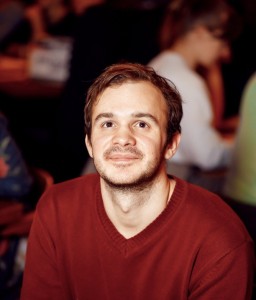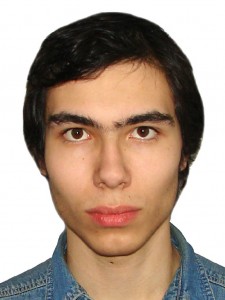 On the 2nd of November 2022, as part of the Photonics Seminar Series, we will have the pleasure to have two 4th year PhD students from Skoltech Center for Photonic Science and Engineering present their research results: Ivan Kazakov and Igor Salimon
On the 2nd of November 2022, as part of the Photonics Seminar Series, we will have the pleasure to have two 4th year PhD students from Skoltech Center for Photonic Science and Engineering present their research results: Ivan Kazakov and Igor Salimon
When: On the 2nd of November 2022, Wednesday, at 17:00 MSK time
Where: New Campus room E-B2-3006 / BigBlueButton
Ivan Kazakov will give a talk entitled “Photonic Integrated Circuits for Structural Health Monitoring” and review optical Structural Health Monitoring methods and the development of Arrayed Waveguide Grating (AWG) spectrometer and a special widely Tunable Laser Source (TLS).
Ivan Kazakov is a 4th year PhD student at the Center for Photonic Science and Engineering at Skoltech, under the supervision of Prof. Arkady Shipulin. Ivan has received his Master’s degrees from DGAP, MIPT, and Photonics and Quantum Materials program at Skoltech, and his BSc degree from DPPE, MIPT. He is developing a photonic integrated interrogator for a structural health monitoring system for his PhD. He has extensive experience in the research and development of photonic integrated circuits. He has taken part and is currently working on different research and industrial projects at Skoltech and PICsTech startup.
Abstract:The current talk is devoted to a review of optical Structural Health Monitoring (interrogation) methods and the development of the two key devices for the interrogator on chip: Arrayed Waveguide Grating (AWG) spectrometer and a special widely Tunable Laser Source (TLS).
Structural Health Monitoring (SHM) is a name for a set of technologies that allows sensing of different structural and technological parameters, for example, temperature, strain, vibration, etc. for any application. It founds its place for the monitoring of degradation processes, and operational parameters for various types of buildings, vehicles, and facilities. The most advanced techniques of SHM systems are Fiber Bragg Grating (FBG) based sensor systems, due to their abilities for multiplexing information signals, lightweight, and superior operation under harsh environments. The second main component of the SHM system is the device for obtaining information from the FBG sensors, which is called an interrogator. It could be based on different physical principles: passive spectrometry, tunable laser spectrometry, and radio photonics. Currently, most of the commercially used devices are based on discrete and fiber optics, therefore they are complex to maintain and expensive. So Photonic integrated Circuits technology is the solution to this problem, which also opens the perspective of miniaturizing the whole system.
 Igor Salimon will present “LIPSS phenomenon for laser synthesis and modification of periodically nano-structured materials“, reviewing Laser Induced Periodic Surface Structures (LIPSS) and presenting his work on the thermochemical periodic oxidation of GaAs and synthesis of regular periodic arrays of MoS2 nanoribbons.
Igor Salimon will present “LIPSS phenomenon for laser synthesis and modification of periodically nano-structured materials“, reviewing Laser Induced Periodic Surface Structures (LIPSS) and presenting his work on the thermochemical periodic oxidation of GaAs and synthesis of regular periodic arrays of MoS2 nanoribbons.
About the speaker: Igor Salimon is a PhD student at Skoltech at the Department of Photonic Science and Engineering (Advisor: Prof. Sakellaris Mailis). Currently, he has two papers published as a first author on the subject of LIPSS. He specializes in laser synthesis and modification of nanomaterials, currently working on the novel method of laser synthesis of few-layer thin films of transition metal dichalcogenide materials.
Cheap and efficient methods of surface modification and patterning are required for a variety of industrial applications. The phenomenon of Laser Induced Periodic Surface Structures (LIPSS) is exploited for surface modification through sub-wavelength self-organization. Such periodic structures modify the surface properties such as friction coefficient, wettability, biocompatibility, reflectivity and structural color. While first observed in 1969, LIPSS remains a scientific evergreen, still controversially explained in the literature and attracting interest for novel aspects of the general phenomenon. We provide an overview of the recent developments in the field of LIPSS and present our work on the thermochemical periodic oxidation of GaAs and synthesis of regular periodic arrays of MoS2 nanoribbons.